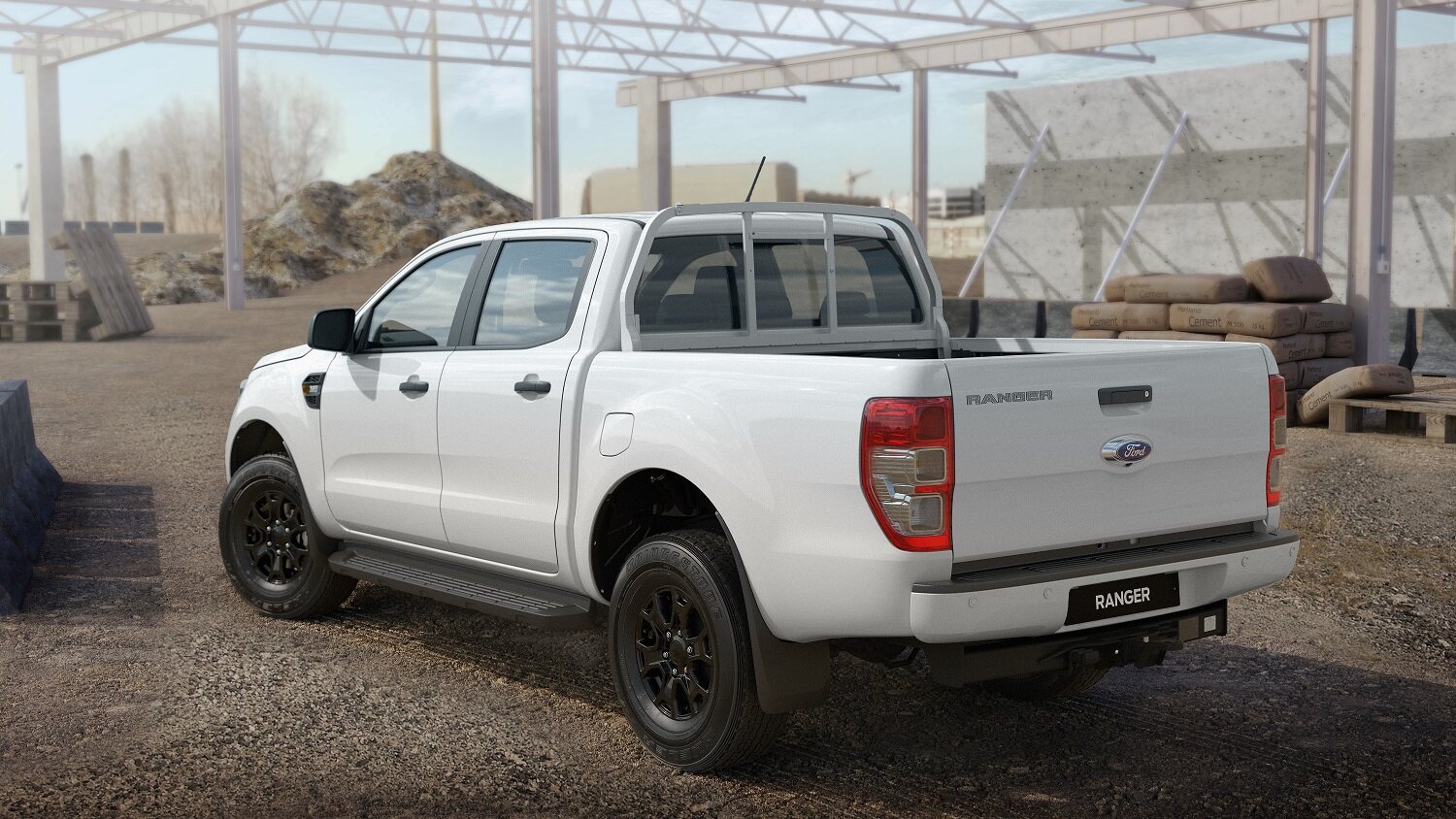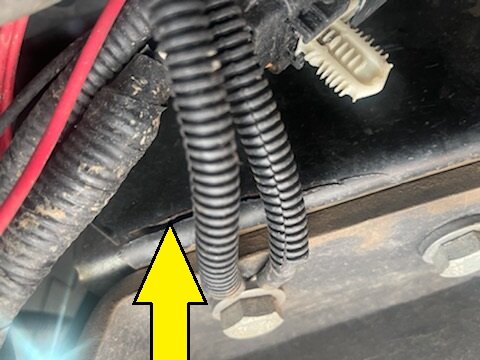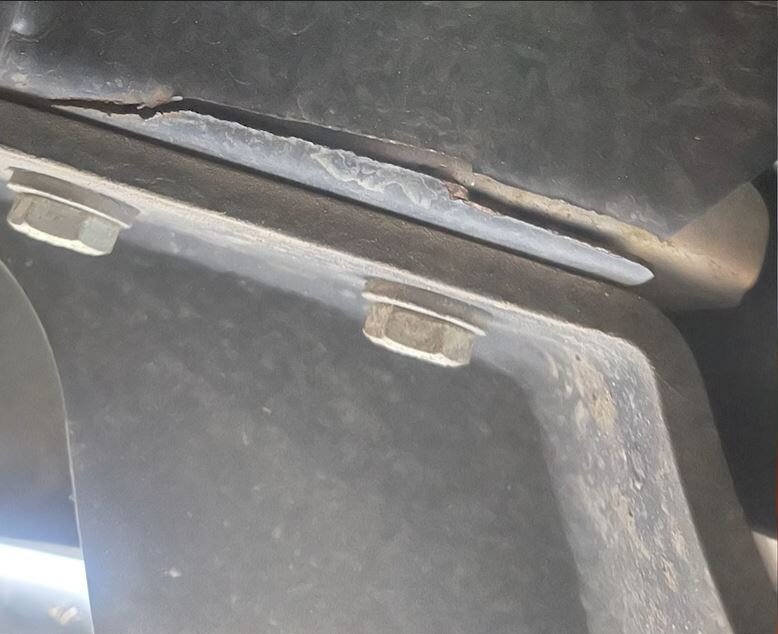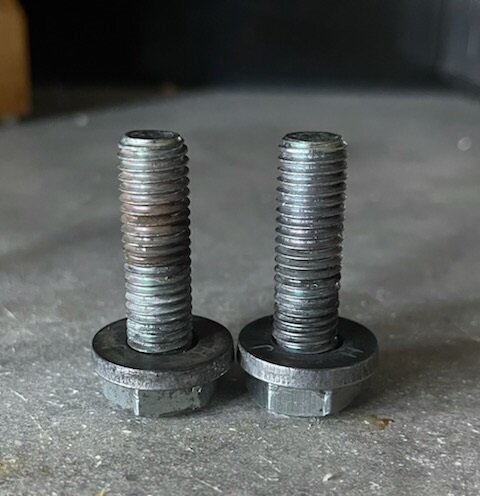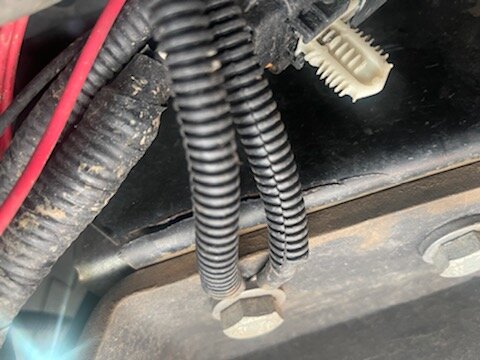Hi-tensile bolts Vs chassis Vs dealer incompetence
When an incompetent service department and poor customer service combine, you get an angry Ford Ranger owner with a broken chassis, and I get emailed. Here's what happened...
In the Ford universe, what’s that procedure for dealership incompetence? That’s right, you just throw the customer under the bus.
In this report, you’ll see how something as simple as fitting a towbar badly can crack your chassis.
Plus, we’ll look at some mad hardcore bolt science as well.
Imagine being a builder, doing okay, and three years ago, you bought two Ranger XLT dual-cabs from your local Ford dealer, with the full ARB modification package. You even had it fitted by the dealer’s service department.
Fast-forward three years and 36,000 kilometres, where one of those Rangers, aside from its endearing habit of spitting engine codes randomly and going into limp mode, it’s now got a bigger problem.
A much, much bigger problem, indeed:
You’re looking at a cracked arse end of the chassis rail. Where the ARB towbar bolts up. This is where the ARB towbar - recommended and fitted by the dealer - is mounted to the chassis. And it’s opening the bottom edge of the chassis rail like a tin can.
There are 10 bolts holding that towbar on. They’re M12 grade 8.8 high-tensile bolts. Plain as day. It’s stamped into the bolt head. All 10 of them are loose on this Ranger. We’ll get to that.
The customer here didn’t want to be named, and he asked me to leave the dealership out of it as well, even though I was kinda gagging to name and shame those arseholes.
As I’m going soft in my dotage, clearly, Neville, as he’ll be known henceforth, is a nice bloke. I spent about 30 minutes talking to him by phone this morning. Everything he said to me passed the ‘sniff’ test. This is his third Ranger, and also his last.
Neville alleges the Arsehole Ford Dealer (AFD) told him that sometimes bolts such as these “just come loose”. Speaking as an engineer, that’s outright bullshit. You have to be profoundly mechanically ignorant even to think that.
WHY I DON’T RECOMMEND BUYING A FORD
Why Ford will fail in Australia >>
The heavyweight problem with Ford Everest Basecamp >>
When Ford axed the Endura SUV: A "don't buy" warning for 2021 >>
2021 Ford Mustang Mach 1: ultimate 'missing features' botch >>
Ford Australia Fails Road Safety Survey Credibility Test >>
Ford in-car advertising is just around the corner. Welcome to Hell. >>
JobKeeper scheme fails the taxpayer and delivers more auto industry welfare >>
My AutoExpert AFFORDABLE ROADSIDE ASSISTANCE PACKAGE
If you’re sick of paying through the neck for roadside assistance I’ve teamed up with 24/7 to offer AutoExpert readers nationwide roadside assistance from just $69 annually, plus there’s NO JOINING FEE
Full details here >>
How bolts work: A PSA for all service department mechanics
These photographs tell me that this towbar was not installed properly. Let’s talk about why:
When you bolt two bits of wood together to build a deck on the back of the house, the bolts literally carry the load and the wood tries to shear off the bolts restraining them, hopefully unsuccessfully.
In a high tensile joint, like this towbar, the clamping force on the bolts presses the mating surfaces of the parts together - really hard - and it’s the bearing pressure and surface interaction between the two parts that stops the joint from moving. In this case, the chassis rail and the towbar.
The most common kind of high-tensile bolted joint you’re familiar with is the one holding the wheels onto your car. Five or six nuts, typically clamping down a corresponding number of grade 10.9 (typically) M12 studs.
The wheels are held in place by the friction (it’s really surface interaction) between the wheel and the flange it mounts to. The studs don’t carry the shear loading.
So, in Neville’s case, there are 10 grade 8.8 M12 bolts holding the towbar on. Five each side. Grade 8.8 is the ‘base’ high tensile bolt. Fasteners step up to grades 10.9 and 12.9 - with corresponding increases in safe clamping force. They also get a bit more brittle as you go up.
So, for M12 it’s about 4 tonnes’ clamping force for grade 8.8, about 6 tonnes for 10.9 and about 7.5 tonnes for 12.9.
Each chassis rail here is attached to the towbar with five bolts, and if you tighten them up to the right torque spec, each bolt delivers about four tonnes of clamping force. That’s four tonnes, each. That’s roughly two fully pimped XLT Rangers per bolt.
If the bolts are unlubricated on assembly you probably need about 90-95Nm of assembly torque. If they’re lightly lubed, 70-75Nm should be sufficient. And that’ll give you about 20 tonnes of clamping force, per rail, holding the towbar on.
That's the ‘weight’ of 20 Rangers in total. It’s enough to hold most things on. In fact, it’s super-conservative.
The only reason fasteners like these might randomly ‘just come loose’ is if you don’t do them up properly in the first place.
According to widely accepted engineering theory, there are five main reasons why a high-tensile bolted joint would hypothetically ‘just come loose’. And number one with a bullet is: Under-tightening.
If you’re in a service department and you’re not using a torque wrench to install the tow bar bolts, and accommodating their lubrication status into the torque you are using, you are getting this wrong. If you’re not double-checking each bolt, again, you’re doing it wrong.
Vibration and shock loads are potential causes of loosening as well. ARB’s design, using five bolts and about 20 tonnes of clamping force per rail, is a countermeasure against these small micro-movements. It’s a brute-force solution. Massive clamping load equals the bolts being unaffected by in-service vibration. So that’s two mechanisms off the table - vibration and shock loads.
There’s also ‘embedding’, at a micro level, on the underside of the bolt head, digging into surface irregularities on the parts. That’s what those thick washers are for, to spread the pressure and restrict that ‘embedding’ mechanism. Any time you see engineered parts with thick washers like that, chances are you’re looking at a high-tensile joint. (Then just look for 8.8, 10.9 or 12.9 on the bolt heads.)
There’s also gasket creep, when gaskets compress in the joint, and it relaxes. This is more of a problem in a refinery; no gaskets here in the towbar case.
Lastly, there’s differential thermal expansion, but these are all steel parts at roughly the same temperature all the time, so, it’s also not an issue.
Of course, I only went to university for six years to learn all this stuff. And it’s hardly the same as stapling invoices to receipts and unboxing parts in a service department. Engineering is not telling some random customer that bolts just randomly come loose and there’s ‘nothing you can do’.
Pro Tip: Grounding an electrical connection like that is just unprofessional and a rookie mistake.
The Applied Physics of Heavy Towing will explain the impending dangers already inherent in towing trailers, which is another smear on Ford and its dealer’s bad customer service - this could have been a disaster for Neville and his family. And yours.
The regulatory void: Consumers left to fight for themselves
In my view, this chassis is broken in four places because the dealership failed to tighten those bolts to spec. It cannot be anything else.
I spoke to Neville about the trailer he tows, which doesn’t exceed 1800 kilos - only about half of the Ranger’s purported maximum tow capacity. So it’s not the trailer that’s done the damage.
It’s not Ford’s chassis engineering because there isn’t a plague of cracked Ranger chassis out there in-service. And nor is it ARB’s towbar, for the same reason.
You’re looking at the consequence of dodgy installation. High tensile bolted joints do not function as designed if the bolts are not tightened to spec by some competent tradie using a torque wrench.
When they’re not tightened correctly, the parts move relative to each other, the loads are not distributed evenly, and you’re looking at the result. This is a catastrophic failure looking for a place to happen - usually at the weakest point.
The thing that shits me about this is how Neville dropped $140,000 on AFD (Arsehole Ford Dealer), three years ago, and rather than just admit their error and fix it, they’re actively trying to dodge this bullet.
Of course, the ACCC is asleep at the wheel, as well as the fact it doesn't act for individuals. To Rod Sims, the chairperson, you need to wake up and have a little look into AFD. (I’ll even tell you their name.) They’re not waking up any time soon.
Consumer affairs is also another toothless tiger.
The other critical part of this episode is whether Ford is pressuring its dealer to do the right thing by a valued customer. I don’t think they are. They’re happy with, ‘It’s not our problem because it’s not a manufacturing defect’.
And this is why I do not recommend Ford. I want to love Ranger. Looks good. Performs well, when it’s not pooping its trousers.
Should I buy: Ford Ranger 2.0 twin-turbo Vs 3.2 five-cylinder? >>
But Ford’s customer support is shit - in my opinion.
Andrew Birkic is the current boss of Ford Australia, to whom I would remind, AFD is flying your flag, and it seems to me they’re disrespecting the mighty blue oval. Which is a neat trick, all things considered.
Mr Birk could pick up the phone and have a stern conversation, or even give a profane talking-to. That’s what I would do, cursed with that job.
Here’s the thing, Ford Australia: ‘Cracked chassis’ does sound terrible. But in reality, it’s a pretty simple (and not all that expensive) fix.
Just drill out the head of each of those four cracks, grind bevels into the sides of the cracks, clamp it up, and do a full penetration butt weld repair. Good as new - stronger, even (given that weld filler material is typically about 80 per cent stronger than average structural steels.
You could go nuts and weld it up with low-hi, like 7016 or 7018, and the repair would be twice as strong as the metal around it. Any competent boilermaker-welder could do this. It’s easy, in fact, as structural repairs go. (This is something I know a bit about.)
Customer Service 1-0-1
What you’re really seeing here is a failure of ethics, mostly.
Neville has a problem, and the evidence screams improper installation. We know whose fault it is. It cou;dn’t be simpler: the dealer should just fix the problem and cop the cost of the welding on the chin. It’s not even gonna be that expensive - and with any luck the good will instilled in Neville might see him return for a Ranger (or Amarok) in 2023 >>.
It’s also a commercial failure:
A) Because I doubt Neville is ever going to drop six figures on another couple of Fords; certainly not from this Arsehole Ford Dealer, and I don’t think they can afford to burn customers in this way. Because Ford Australia is in big trouble >>
It staggers me that dealers don’t take a long-term view on anything, like old-school customer loyalty. They cannot see beyond the end of the month.
And B) There's a clear ‘public interest’ case for you to be made aware of the potential consequences of doing business with a dealership like this, or a brand like Ford in general which doesn’t go in to support its allegedly valued customers.
Neville has even been billed for the ‘work’ the dealership allegedly checked and tightened all chassis and body bolts at each service. It’s on his invoice. And, last time I looked, that towbar is bolted to the chassis. Therefore, it’s probably well overdue for the service department to tighten up on the quality control there.
You could even argue there’s a potential case for WorkSafe to get involved here. But it need not get to this point.
As I see it, the dealership has had two or three perfect, routine, systematic opportunities to identify their botched installation and rectify it before the chassis cracked. And they failed at this, too. But they still billed Neville for allegedly doing these checks.
High tensile bolts don’t simply come loose in service, any more than water flows uphill or the sun sets in the east. It just doesn’t happen.
I implore AFD and Ford Australia to seize this opportunity, break with tradition, and do the right thing for a change. I’ll even report it if you do.
We’re all just lucky, in the public, Neville’s trailer didn’t completely detach and become a much more lethal problem. That’s a report I don’t want to make.



